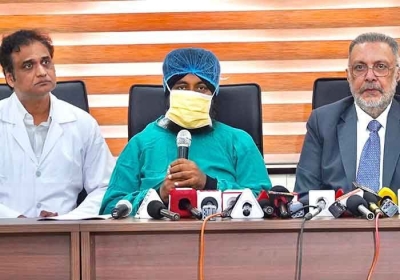
Trump suggests scrapping FEMA in disaster zones
President Trump advocates for eliminating FEMA during disaster relief visit
On January 25, 2025, President Donald Trump made headlines during his visit to North Carolina and California, both states still recovering from severe natural disasters. Trump, in his second term as president, expressed his dissatisfaction with the Federal Emergency Management Agency (FEMA) and suggested a major change in how disaster relief is managed in the United States.
During his visit to North Carolina, where Hurricane Helene had caused significant damage months earlier, Trump stated that he was considering eliminating FEMA. He suggested that instead of federal funds going through FEMA, money could be sent directly to the states to help them handle their own disaster recovery efforts. Trump criticized FEMA as being too slow and bureaucratic, pointing out that states could handle disasters more effectively on their own.
In his discussions about FEMA, Trump said, "FEMA has been a very big disappointment. It’s very bureaucratic, and it’s very slow." His remarks came as he was speaking to the press while visiting North Carolina, a key battleground state. He added that Michael Whatley, a North Carolina native and chair of the Republican National Committee, would play a significant role in coordinating recovery efforts in the state, despite not holding an official government position.
Trump's criticism of FEMA and state control of disaster response
Trump's dissatisfaction with FEMA was not just a passing comment. The president emphasized that he wanted to see a shift in how disaster relief is provided. He proposed that states take on more responsibility when it comes to handling natural disasters like hurricanes and tornadoes. He suggested that the federal government could step in if necessary, but overall, the states should be in charge of disaster management. "Let the state take care of the tornadoes and the hurricanes and all of the other things that happen," Trump stated during his visit to North Carolina.
Trump argued that shifting responsibility to states would result in a faster and more cost-effective disaster response. His criticism of FEMA and its handling of recent disasters was not limited to North Carolina; he also made similar comments about the wildfires in California. Trump arrived in California after his visit to North Carolina, where he observed the damage caused by the wildfires in Los Angeles. While touring the area, he reiterated his concerns about how disaster management is handled at the federal level and expressed his belief that states should have more control over disaster relief.
In California, Trump continued to criticize the state’s water policies, which he argued contributed to the severity of the wildfires. He falsely claimed that if water had been allowed to flow in certain parts of the state, the fires could have been put out more quickly. He made these claims despite scientific studies showing that climate change played a significant role in the intensity of the fires. Trump’s comments were part of a broader attempt to shift blame away from the federal government and onto local policies.
During his visit to North Carolina, Trump took the opportunity to meet with residents affected by Hurricane Helene. Many of them had been struggling with insurance claims and the slow pace of recovery efforts. Some residents told Trump about their difficulties with FEMA and the lack of support they felt they had received from the federal government. Trump promised to address their concerns, saying, “You are not forgotten any longer. You were treated very badly by the previous administration.”
In California, Trump was greeted by Governor Gavin Newsom, a frequent critic of the president. Despite their political differences, the two men exchanged pleasantries and expressed a willingness to work together on recovery efforts. Newsom thanked Trump for his support during the COVID-19 pandemic and said he hoped the two could collaborate on disaster recovery as well. However, the president’s relationship with California leaders has often been contentious, especially when it comes to water policies and disaster management.
ALSO READ: Trump 2.0: how the Former President's comeback differs from his first term
ALSO READ: Taliban refuses Trump’s call to return $7 billion in US Weapons
While flying over areas devastated by the wildfires in California, Trump and his team were briefed on the ongoing recovery efforts. Trump visited Pacific Palisades, a community in Southern California that had been severely affected by the fires. He was accompanied by First Lady Melania Trump as he spoke with residents and law enforcement officers about the damage. The president’s visit highlighted the disparity between his approach to recovery in California and North Carolina. In California, Trump was less generous in his remarks, focusing more on pushing local officials to change their policies.
Trump’s focus on water policies in California
One of Trump’s main points of criticism in California centered around the state’s water policies. He claimed that the state’s refusal to let water flow freely in certain areas made the wildfires worse. Trump’s comments about water usage, particularly in the northern part of the state, were part of his ongoing criticism of California’s environmental policies. He suggested that until California changes its water management practices, the state should not receive federal assistance for disaster recovery.
This stance was met with resistance from local officials, including members of Congress who argued that the president’s approach to disaster relief was political. Rep. Young Kim, a Republican from Orange County, called it “unacceptable” to use disaster assistance as leverage for unrelated policy changes. Trump’s focus on water policies and his willingness to withhold federal aid raised concerns that disaster victims could suffer even more as a result of political disputes.
Trump’s remarks about FEMA and his proposed changes to disaster response reflect a broader conservative desire to reduce the federal government’s role in disaster management. Many of Trump’s allies have argued for cutting federal funding for disaster relief and allowing states to take on more responsibility. However, critics of this approach warn that it could leave vulnerable communities without the resources they need to recover from catastrophic events.
One key issue that has been raised in response to Trump’s comments is the potential for unequal disaster recovery efforts. If states are left to handle disasters on their own, some regions could receive more aid than others, depending on the political priorities of state leaders. This could lead to disparities in recovery efforts and further exacerbate existing inequalities.
FEMA has been a critical part of the federal disaster response system, providing financial assistance to individuals and local governments in the aftermath of natural disasters. The agency helps fund recovery efforts such as debris removal and temporary housing, and it also provides direct financial assistance to residents who have been displaced or need help rebuilding.
Critics of Trump’s proposal to eliminate FEMA argue that the agency plays an essential role in coordinating disaster relief and ensuring that resources are distributed fairly across the country. Michael Coen, who served as FEMA’s chief of staff during the Biden administration, criticized Trump’s suggestion, calling it “misinformed.” Coen argued that FEMA’s work is vital during times of crisis and that the agency’s efforts should not be undermined.
In addition, Coen raised concerns about the idea of using disaster aid as a bargaining chip in political negotiations. He warned that attaching conditions to disaster relief could create divisions between communities and lead to unequal treatment of disaster victims. Americans, he said, expect the federal government to provide support when disaster strikes, regardless of where they live or their political affiliations.
Trump’s visit to California and North Carolina also highlighted a larger issue: the impact of climate change on natural disasters. Both Hurricane Helene and the wildfires in California were intensified by global warming, with rising temperatures and changing weather patterns contributing to more extreme events. However, Trump has long been skeptical of climate change and has downplayed its role in exacerbating natural disasters.
The president’s refusal to acknowledge the link between climate change and the severity of natural disasters has led to criticism from environmentalists and scientists. Studies have shown that climate change is contributing to more frequent and intense hurricanes, wildfires, and other extreme weather events. Yet, Trump has continued to downplay the issue, focusing instead on local policies and federal disaster relief efforts.
Trump’s visit to North Carolina and California, along with his comments about FEMA, reveal his desire to overhaul the way the United States responds to natural disasters. While some may agree with his push for more state control, others worry that eliminating or reducing FEMA’s role could lead to unequal recovery efforts and leave vulnerable communities without the support they need. Trump’s focus on water policies in California and his disregard for the impact of climate change on disasters have also raised concerns about his approach to disaster relief. As the country faces increasingly frequent and severe natural disasters, the debate over federal versus state control of disaster management is likely to continue.





